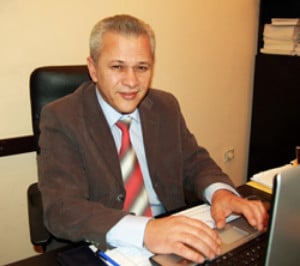Selected Papers from the 5th International Symposium on Mining and Environmental Protection
A special issue of Energies (ISSN 1996-1073).
Deadline for manuscript submissions: closed (31 May 2016) | Viewed by 29973
Special Issue Editor
Interests: mining; mechanization; environment; secondary raw materials; treatment and recycling of industrial and mining wastes
Special Issues, Collections and Topics in MDPI journals
Special Issue Information
Dear Colleagues,
The 5th International Symposium on Mining and Environmental Protection will be held on June 2015 in Vrdnik, organized by the Faculty of Mining and Geology in Belgrade—Center for Environmental Engineering.
Previous conferences were very successful, and scientist and companies from many countries gathered to exchange information and research results. The objective of this conference is to bring together engineers, scientists, and managers working in the mining industry, research organizations, and government organizations, on development and application of best practice in the mining industry with respect to environment protection.
The attendance of representatives from almost all Serbian mines is expected, as well as a significant participation of professionals from mines, institutes, and universities from Europe, Russia, Asia, Canada, and America.
The framework of the conference offers wide possibilities for program presentations: advertising in the Conference Proceedings, exhibitions in premises available at the conference, presentations displayed on illustration boards or videotapes, oral presentation, etc.
Prof. Dr. Ivica Ristović
Guest Editor
Manuscript Submission Information
Manuscripts should be submitted online at www.mdpi.com by registering and logging in to this website. Once you are registered, click here to go to the submission form. Manuscripts can be submitted until the deadline. All submissions that pass pre-check are peer-reviewed. Accepted papers will be published continuously in the journal (as soon as accepted) and will be listed together on the special issue website. Research articles, review articles as well as short communications are invited. For planned papers, a title and short abstract (about 100 words) can be sent to the Editorial Office for announcement on this website.
Submitted manuscripts should not have been published previously, nor be under consideration for publication elsewhere (except conference proceedings papers). All manuscripts are thoroughly refereed through a single-blind peer-review process. A guide for authors and other relevant information for submission of manuscripts is available on the Instructions for Authors page. Energies is an international peer-reviewed open access semimonthly journal published by MDPI.
Please visit the Instructions for Authors page before submitting a manuscript. The Article Processing Charge (APC) for publication in this open access journal is 2600 CHF (Swiss Francs). Submitted papers should be well formatted and use good English. Authors may use MDPI's English editing service prior to publication or during author revisions.
Keywords
- Sustainable development in mining industry
- Surface mining and Environmental protection
- Underground mining and Environmental protection
- Clean coal technology
- Clean energy
- BAT technologies in mining industry
- Mine closure
- Air pollution
- Soil contamination, remediation and recultivation
- Mining water and waste water management
- Environmental impact assessment
- Life cycle assessment
- Environmental management system
- Environmental policies
- Public health and the environment
- Ecology and ecosystem management
- Environmental aspects of the exploitation and usage of energy resources
- Environmental protection in field of exploitation, preparation and transportation of oil and gas
- Carbon capture and storage
- Emission markets (ETS, carbon, GHG, SOx)
- Natural renewable resources
- Biomass





